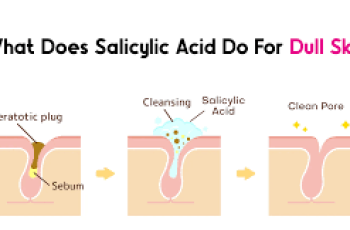
Can I use Hyaluronic Acid on my Arms and Legs?
Since the day hyaluronic acid made its way into our daily skincare routine, we have been obsessed ever since! Naturally occurring in the body as well as being derived from sugar cane, this clever ingredient has various benefits and abilities to hydrate the protective skin barrier ensuring the skin is fully protected from environmental aggressors. Not to mention how it target signs of dehydration reducing the appearance of fine lines and wrinkles. And those are only a couple of the benefits you can expect to see when using hyaluronic acid in your everyday skincare routine, you understand our obsession a little better now right?
The magic of hyaluronic acid doesn’t stop at skincare benefits, it is also praise for the impressive hydrating results you can expect to see when using it on the body too, so this leads me to finding out can you use hyaluronic acid on your arms and legs? Let’s dive right in and find out more.
Can you put hyaluronic acid on your body?
You can indeed, in fact, many skincare experts rave about the effects of using body gels, lotions, and creams enriched in hyaluronic acid can revive tried looking skin on the body, especially on areas that can become quite dry, such as arms, elbows, legs and knees. You’ll really notice a difference and improvement in the overall skin health if you find you have experienced sunburn or excessive sun exposure. This will often lead to the skin on the body and face feeling tight, dry, and uncomfortable. Be sure to take with you a body gel packed with hyaluronic acid on any tropical and warm holidays to keep your skin healthy, hydrated, and in its happiest state.
What skin type should use hyaluronic acid?
Hyaluronic acid is suitable for almost all skin types, this is because all skin types are likely to suffer from dehydration. Thanks to the humectant traits of HA, you’ll find it is able to draw in moisture surrounding the face and even the water content of skincare formulas can be locked into place. This leaves you with a plumped, hydrated, and youthful complexion. The main skin types that will gain optimal results are those who are dry and prone to flare-ups in certain conditions such as eczema, psoriasis, and even dryness from day-to-day exposure to central heating and harsh climates to name a few environmental aggressors. As for oily skin types, you’ll find that they also suffer from dehydration which not only leaves the skin barrier weakened to potential damage, but you’ll also find that signs of ageing, such as fine lines and wrinkles, become more noticeable.
Can you put hyaluronic acid on your hands?
Absolutely! Using a daily hand cream packed with hyaluronic acid, and SPF will ensure the skin on the hands are fully protected from damage with fine lines and areas of dryness combated, as well as a helpful boost in collagen giving them a replenished and youthful appearance.
Quite often our hands are the last thing we think of when it comes to self-care. But due to the fact they are continuously exposed to daily free radicals, such as UV rays and bad weather they are one of the first areas of your body that show signs of ageing, from fine lines and dark spots of pigmentation also called age spots.
What happens if you use too much hyaluronic acid?
Sadly, you can have too much of a good thing. You can indeed use too much hyaluronic acid and because of its hard-working humectant tendencies, you’ll be left with skin that feels thirstier. The reason for this is because hyaluronic acid never stops working at drawing in moisture from air around the face and other skincare products formulas. If HA (hyaluronic acid) finds there isn’t enough humidity in the air or product formulas, it will simply begin drawing moisture up from the lower layers of the skin which unintentionally prevents the skin from gaining the optimal results.
Is it OK to use hyaluronic acid every day?
Yep, you certainly can! In fact, it is strongly advised to use hyaluronic acid enriched products twice a day. To get the most out of it use it during your morning and evening routine by applying it onto freshly cleansed skin, preferably that is still slightly damp to kick start hyaluronic acid’s humectant traits. You’ll find that using serums enriched in hyaluronic acid will keep the skin barrier plumped and hydrated which will lead to any other products you apply to the face will be absorbed rapidly and leaving you with fast results.
Much like all skincare ingredients it is important that you ensure they are the best for you and your skin. Therefore, I suggest consulting with a doctor or dermatologist, as well as perform a patch test on the skin for 24 hours to avoid any unwanted reactions.
Does hyaluronic acid have side effects?
The short answer is, not really, this is because hyaluronic acid is generally considered very safe for almost all skin types to use. There have been very few reports about any side effects experienced from introducing hyaluronic acid into your daily skincare routine. Having said that, as I have already mentioned it is important to ensure you and your skin will benefit from this powerhouse ingredient in your routine.
Should I apply hyaluronic acid on wet skin?
Yes, because hyaluronic acid is a magnet for water it will thrive when it is applied to wet skin. Bearing in mind of course, that you wouldn’t want your skin to be too wet as this will prevent the skincare formula to absorb into the skin surface. As a rule, for skincare application, it is considered best to work your way from the thinnest formulas to thickest formulas. This is ideal for you to reap the rewards of serums enriched with hyaluronic acid that is applied after cleansing and exfoliating toners, but before thicker moisturisers.
So, there you have it, hopefully I have answered some if your questions about using hyaluronic acid on your arms and legs. Don’t forget if you have any more questions come and follow us in Instagram, you can find me in the DMs.


